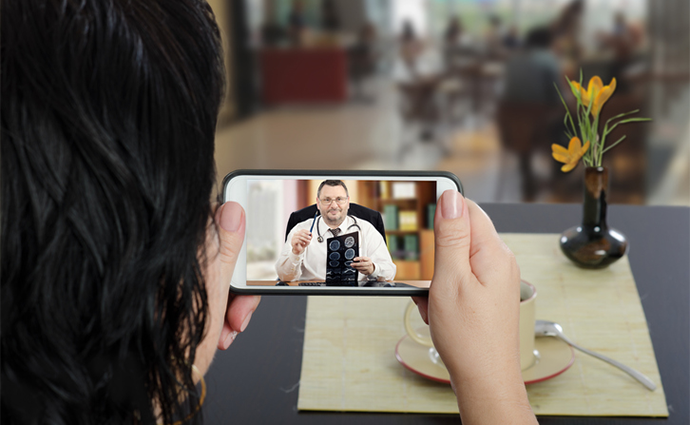How UPMC is Tackling Telehealth No-Shows, Missed Appointments
Despite the convenience telehealth offers, UPMC sees similar no-show rates for both virtual and in-person care, leading the health system to implement several strategies to combat the issue.

Source: Getty Images
- No-shows — that is, patients who do not show up for a scheduled appointment without informing the clinic beforehand — are a persistent problem in healthcare.
Not only do no-shows result in lost revenue, but also waste providers' time. With the advent of telehealth, it appeared that perhaps no-shows would become a thing of the past, as virtual care made it easier for patients to attend their appointments from wherever they are. But new data shows that may not be the case.
In a recent survey of 624 providers, approximately 45 percent reported that telehealth no-show rates were higher or much higher than in-person no-show rates, while only 22 percent said the rates were equal.
This shows that providers need to focus on reducing no-shows in telehealth just as they do with in-person care.
A snapshot of no-show rates at UPMC
For Pittsburgh-based UPMC, the no-show rates for in-person and telehealth visits are within 1 percent of each other, said Robert Bart, MD, chief medical information officer for UPMC, in a phone interview.
The no-show rate averages 9 percent to 9.5 percent for telehealth and 8.5 percent or so for in-person care.
Interestingly, the COVID-19 pandemic does not appear to have greatly affected no-show rates for either telehealth or in-person care. If anything, no-show rates dropped a little during the pandemic.
"There was a transient period, I would say," Bart said. "Looking at the data, maybe the last six months of 2020…the no-show rates were actually a little bit lower than historical averages. Our thoughts around that are that because many people were predominantly working remotely, that they had much more flexibility with their schedule and were able to make it."
Certain types of care, physical therapy for example, experienced historical lows in their no-show rates for this very reason, Bart added.
Also interestingly, there don't seem to be demographic differences in no-show rates either for telehealth visits or in-person care. This indicates that the assumption that seniors and other populations may be reluctant to use new care models with an emphasis on technology is incorrect.
How UPMC is working to reduce no-shows
With no-show rates for telehealth and in-person visits appearing to almost mirror each other, UPMC employed similar strategies to curb no-show rates in both arenas.
The first is to overbook slightly.
"[It's common] for the clinic staff to slightly overbook the visits for a given day, knowing that X percent tend to no-show historically, and then knowing also that on occasion, everybody will show up, and that they'll just have to see an extra patient or two, because everyone does show up," Bart said.
Another key strategy is patient reminders. UPMC reaches out to remind patients of their appointments — via phone calls, patient portal messages, text messages, or email — a day or two before the visit.
"We have multiple methods of either reminding or reaching out to patients who are on the schedule," Bart said. "All of those reminders have options and opportunities to cancel or reschedule the appointment if it turns out you can't make it. We try and make it as convenient as possible without being too message-heavy in the interactions."
But there was one important way in which patient messaging had to evolve as in-person visits slowly resumed in mid-2020.
The health system had to make it very clear to patients whether they were booked for a telehealth visit or an in-person appointment.
"The messaging did have to mature in that manner, to make sure that we're being very explicit, very clear, with our patients so that they knew, 'This one is in person. You will show up, this is the location. This one is virtual. You will access it through the MyUPMC patient portal, either on your smartphone or on a computer,'" Bart said. "We just had to make sure that there was extreme clarity in the messaging."
UPMC does not have penalties for no-shows, instead focusing on reminders, clear messaging, and plenty of opportunities to reschedule.
"We want people to notify us as soon as they know that they can't make a visit, whether it's in-person or virtual," he said. "In all of our messaging leading up to an appointment in the prior two weeks, we always put the opportunity, both with phone call number and with a link, to be able to go in and either cancel or reschedule the appointment."
But telehealth still has an edge in some ways
Though rates of no-shows are similar between virtual visits and in-person appointments, there is a significant gap in the rate of late cancellations between the two.
The late cancellation rate for virtual visits is 8 percent versus 12 percent for in-person care. So, of the overall number of scheduled visits, completion rates for virtual care are higher than completion rates for in-person visits, Bart said.
In fact, rolling 12-month UPMC data shows that the rate of completed in-person visits is around 64 percent, while the rate of completed virtual visits is 75 percent.
This means that even though the issue of no-shows is prevalent regardless of visit type, virtual care is still more convenient for patients and can help boost access to care.
The same survey of 624 providers cited at the beginning of this article also highlights the enduring popularity of telehealth among providers and payers alike. Over 80 percent of the providers surveyed said they intended on continuing to use telehealth, as did 63 percent of the 1,042 healthcare consumers surveyed.
